Why Creative Pop Culture
Creative Pop culture is one of the most powerful systems through which people express emotion, share meaning, and challenge norms. It is not a distraction from serious thought—it is a living archive of collective experience. Whether through music, film, fashion, or digital media, pop culture creates symbolic reference points that help individuals connect across generational, geographic, and cultural divides. It builds conversation by offering accessible formats for complex ideas, and it breaks boundaries by amplifying voices that disrupt traditional hierarchies. Pop culture is participatory, remixable, and emotionally charged. It functions as both mirror and catalyst, reflecting societal values while reshaping them in real time. So Why Pop Culture Can Changes Us?
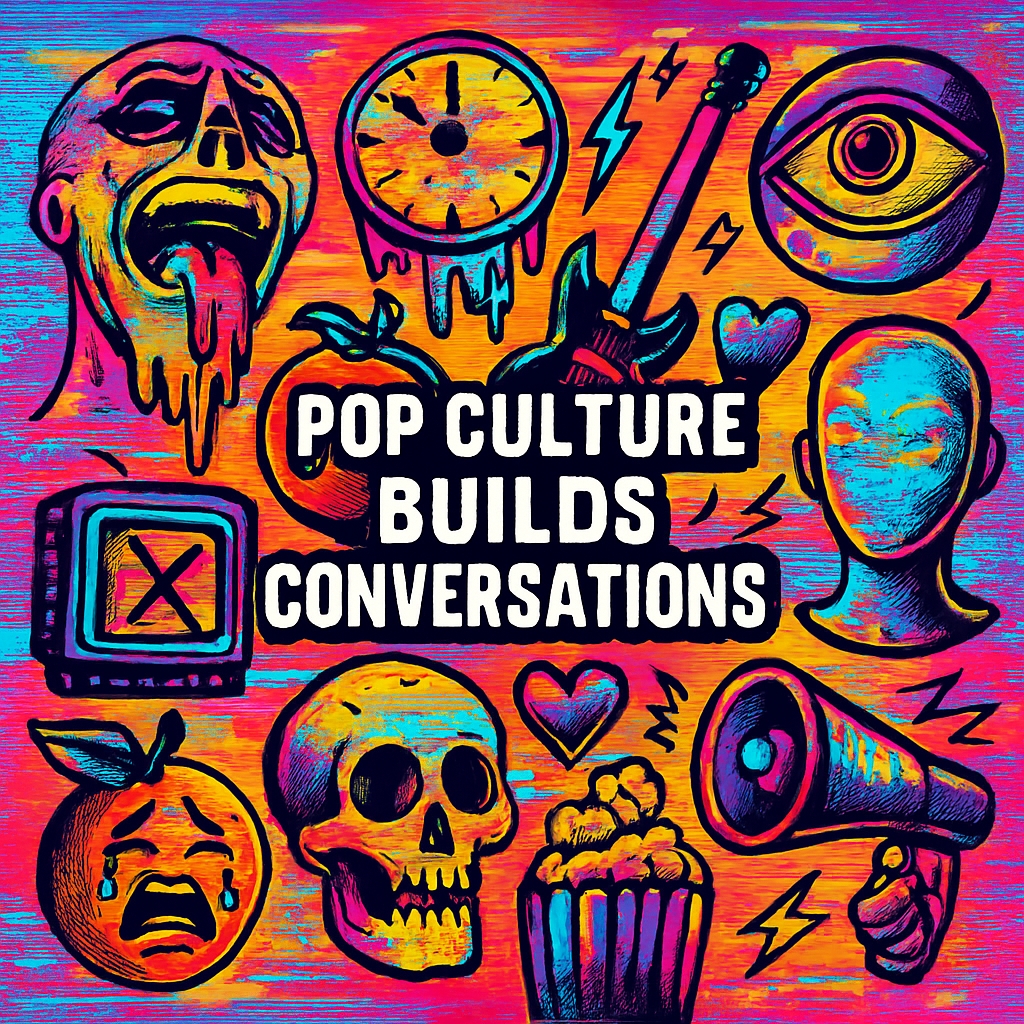
Builds Conversation
Pop Culture Builds Shared Language
Pop culture creates a vocabulary that transcends geography, age, and background. It allows people to connect through references in music, television, film, and digital media. Catchphrases, visual motifs, and iconic moments become shorthand for complex ideas that might otherwise remain inaccessible. Shared media experiences foster emotional bonding and social cohesion, giving individuals a sense of belonging and mutual understanding. Pop culture simplifies abstract concepts into formats that circulate widely, enabling playful experimentation with tone, rhythm, and meaning.
Cultural references often bridge generational gaps, sparking dialogue between age groups that might not otherwise engage. Rituals like quoting lyrics or reenacting scenes become social glue, reinforcing group identity and shared memory. Language from pop culture enters everyday speech, creative writing, and even academic discourse, democratizing linguistic innovation and cultural participation. These phrases often carry symbolic weight and emotional charge, functioning as tools for inclusion, exclusion, and self-definition. Media-driven language reflects generational identity and cultural shifts, evolving in real time through remixing and reinterpretation. Pop culture is a living laboratory for linguistic evolution, transforming entertainment into a shared emotional lexicon.
Table – Pop Culture Language Shifts
| Phrase | Origin Context | Cultural Function |
|---|---|---|
| “Slay” | Drag performance | Empowerment and celebration |
| “Binge-worthy” | Streaming culture | Consumption and emotional pacing |
| “Main character” | TikTok storytelling | Identity and self-awareness |
| “Plot twist” | Film and TV tropes | Surprise and narrative control |
| “Glow-up” | Transformation media | Reinvention and self-esteem |
Express Emotion Visual Storytelling Shared Language
Pop Culture Creates Emotional Infrastructure
Pop culture encodes emotional experiences into symbolic formats that resonate across time and space in Shared Language. Songs, scenes, and characters become emotional reference points, allowing individuals to externalize internal experiences and find language for feelings that might otherwise remain unspoken. Media rituals create shared emotional rhythms, synchronizing audiences through collective viewing, listening, and participation. Pop culture helps process grief, joy, anxiety, and nostalgia, offering symbolic scaffolding during personal and societal crises. It provides emotional literacy through storytelling, enabling people to recognize, name, and navigate complex emotional states. Cultural products mirror collective emotional climates, capturing the mood of a generation or the pulse of a moment. Emotional resonance drives virality and cultural longevity, with deeply felt content spreading faster and lasting longer.
Pop culture archives emotional history, preserving the affective textures of different eras through sound, image, and narrative. It fosters emotional bonding in groups, families, and communities, creating rituals of connection and care. Media consumption becomes part of emotional self-care routines, offering comfort, distraction, or catharsis. Symbolic coloration, pacing, and design shape emotional delivery, guiding viewers through arcs of tension and release. Pop culture is not just entertainment—it is emotional architecture, built to hold and transmit feeling.
Table – Emotional Functions of Pop Culture
| Function | Example | Emotional Outcome |
|---|---|---|
| Grief processing | “WandaVision” | Loss and memory |
| Joy amplification | “Ted Lasso” | Optimism and resilience |
| Nostalgia trigger | “Stranger Things” | Childhood and longing |
| Anxiety reflection | “Euphoria” | Chaos and vulnerability |
| Collective catharsis | “Encanto” | Family and reconciliation |
Pop Culture Encourages Symbolic Remixing
Pop culture thrives on reinterpretation. Audiences reframe existing media through memes, fan edits, parody, and homage, transforming passive consumption into active creation. Remixing allows individuals to personalize cultural narratives, inserting their own perspectives, humor, and critique. Symbolic remixing challenges the idea of fixed meaning, revealing that cultural texts are open to multiple interpretations. This process democratizes storytelling, giving fans and creators alike the power to reshape dominant narratives. Remix culture blurs the line between original and derivative, highlighting the fluidity of authorship and ownership.
It fosters creativity by encouraging experimentation with form, genre, and tone. Pop culture becomes a toolkit for symbolic play, enabling users to express identity, emotion, and ideology through reassembled fragments. Remixing also functions as a form of critique, allowing creators to expose contradictions, biases, or gaps in mainstream media. It builds conversation by inviting response, dialogue, and reinterpretation. Symbolic remixing is especially powerful in digital spaces, where content circulates rapidly and evolves through collective input. It transforms media into a living archive of emotional and symbolic exchange. Pop culture’s openness to remixing makes it a boundary-breaking force, constantly renewing itself through participation and reinterpretation.
Table – Remixing in Pop Culture
| Remix Form | Example | Cultural Function |
|---|---|---|
| Meme adaptation | “Distracted Boyfriend” | Humor and gender commentary |
| Fan edits | “Star Wars” re-cuts | Narrative control and critique |
| Parody videos | “Shrek Retold” | Absurdity and collective play |
| TikTok duets | Song reinterpretations | Emotional layering and response |
| Mashups | Genre-blending trailers | Surprise and symbolic fusion |
Pop Culture Fosters Visual Literacy
Pop culture trains audiences to interpret images, symbols, and design choices with increasing fluency. From music videos to animated films, visual storytelling teaches people how to read emotion, narrative, and subtext through composition and color. The repetition of certain visual motifs—like neon lighting in dystopian fiction or pastel palettes in coming-of-age dramas—creates a shared symbolic vocabulary. Pop culture encourages viewers to decode costume, gesture, framing, and texture as part of the emotional experience. It builds familiarity with visual genres such as noir, surrealism, and collage, even outside formal education. Audiences learn to associate specific visual cues with mood, genre, and thematic depth.
This visual literacy extends to advertising, social media, and personal branding, where pop culture aesthetics shape how people present themselves. Pop culture also teaches contrast, pacing, and rhythm through editing and montage. It fosters awareness of visual irony, exaggeration, and metaphor. The rise of fan art, cosplay, and remix culture shows how audiences internalize and rework visual codes. Pop culture makes design principles emotionally legible, turning composition into conversation. It empowers individuals to use visual language to express identity, critique norms, and build community. Visual literacy becomes a tool for emotional navigation and symbolic play. Pop culture is not just consumed—it is visually decoded, reassembled, and reimagined.
Table – Visual Codes in Pop Culture
| Visual Element | Common Use Case | Symbolic Function |
|---|---|---|
| Neon lighting | Sci-fi and dystopia | Artificiality and alienation |
| Pastel palettes | Coming-of-age stories | Innocence and emotional softness |
| Split screens | Music videos and thrillers | Duality and tension |
| Slow motion | Action and drama | Emotional emphasis and gravity |
| Costume exaggeration | Fantasy and drag | Identity amplification and play |
Pop Culture Amplifies Everyday Rituals
Pop culture elevates ordinary routines into emotionally charged rituals. Watching a weekly show, quoting a favorite line, or dressing like a beloved character becomes part of daily life. These rituals create structure, comfort, and identity in a fast-paced world. Pop culture transforms consumption into participation, turning passive habits into active expressions of belonging. Fans build routines around release dates, premieres, and seasonal drops, creating anticipation and shared excitement. These rituals often mirror traditional ceremonies, with countdowns, gatherings, and symbolic gestures. Pop culture rituals foster emotional bonding among friends, families, and online communities.
They provide continuity across time, anchoring memory and identity. Rituals like rewatching a childhood film or listening to a nostalgic playlist become acts of emotional restoration. Pop culture also introduces new rituals, such as reaction videos, fan edits, and themed events. These practices reinforce symbolic meaning and deepen emotional investment. Rituals help individuals navigate change, grief, and celebration through familiar cultural anchors. Pop culture rituals are often intergenerational, passed down or rediscovered across decades. They create emotional rhythms that shape how people experience time, space, and connection. Pop culture turns repetition into resonance, making everyday habits feel sacred. These rituals are not trivial—they are emotional infrastructure.
Table – Pop Culture Rituals
| Ritual Type | Example | Emotional Function |
|---|---|---|
| Weekly viewing | “The Great British Bake Off” | Comfort and anticipation |
| Nostalgic rewatch | “Toy Story” series | Memory and emotional grounding |
| Fan countdowns | Marvel release dates | Excitement and collective focus |
| Themed dressing | Comic-Con cosplay | Identity and symbolic play |
| Reaction videos | YouTube and TikTok | Shared emotion and commentary |
Pop Culture Encourages Emotional Dialogue
Pop culture opens space for emotional dialogue that might otherwise remain private or unspoken. Through characters, lyrics, and story arcs, it gives language to feelings that are difficult to articulate. Audiences use pop culture references to express vulnerability, joy, confusion, and grief. These emotional cues become part of everyday conversation, allowing people to connect through shared affect. Pop culture normalizes emotional expression by embedding it in familiar formats. It provides metaphors and analogies that make complex emotions easier to discuss.
Emotional dialogue often begins with a scene, a lyric, or a meme that resonates deeply. Pop culture helps people externalize internal states, making emotion visible and discussable. It fosters empathy by showing diverse emotional experiences across cultures and identities. Emotional dialogue through pop culture is often safer than direct confrontation, offering symbolic distance. It enables people to process trauma, celebrate growth, and explore identity through mediated stories. Pop culture also teaches emotional pacing—how tension builds, how catharsis unfolds, how silence speaks. These lessons shape how people communicate in real life. Emotional dialogue becomes a form of healing, bonding, and transformation. Pop culture is not just expressive—it is emotionally instructive.
Table – Emotional Dialogue in Pop Culture
| Emotional Cue | Media Example | Conversational Impact |
|---|---|---|
| Vulnerability | “Inside Out” | Emotional naming and empathy |
| Joy | “Paddington 2” | Celebration and optimism |
| Grief | “Up” opening sequence | Shared mourning and reflection |
| Confusion | “Everything Everywhere…” | Identity exploration and chaos |
| Nostalgia | “Harry Potter” series | Memory and emotional bonding |
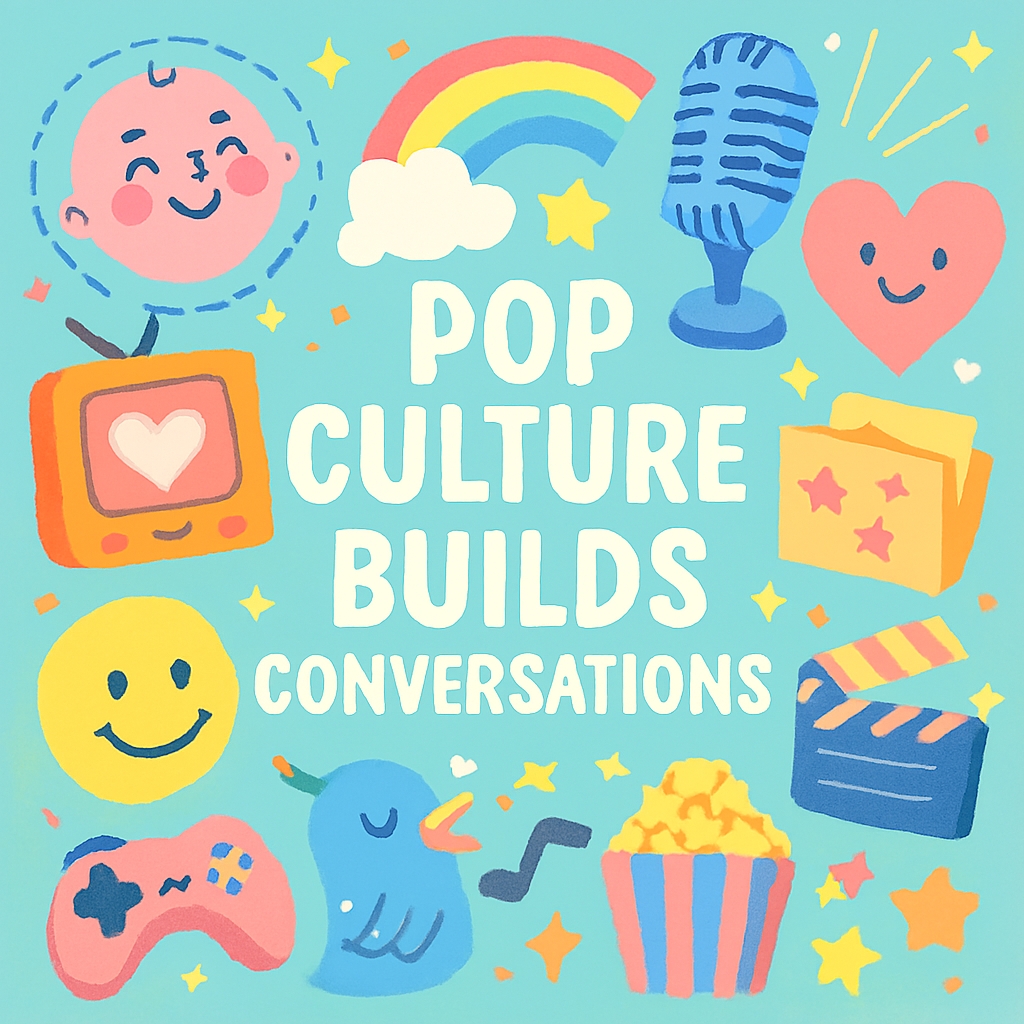
Pop Culture Reframes Identity Through Archetypes
Pop culture offers symbolic templates for exploring identity. Characters, costumes, and story arcs become mirrors through which individuals examine their own roles, desires, and contradictions. Archetypes like the rebel, the caregiver, the outsider, or the visionary provide emotional structure and narrative shorthand. These figures help people make sense of their own experiences by mapping them onto familiar cultural patterns. Pop culture allows for fluid identification, where viewers may shift between archetypes depending on mood, context, or life stage.
It also enables hybrid identities, blending traits from multiple symbolic roles. Archetypes evolve over time, reflecting changing social values and emotional needs. Pop culture reframes identity as something performative, symbolic, and emotionally legible. It gives people permission to experiment with self-presentation, language, and emotional tone. These symbolic roles are not fixed—they are remixable and responsive. Pop culture also challenges rigid identity categories by introducing characters who defy norms and expectations. It fosters empathy by showing how different archetypes carry different emotional burdens. Identity becomes a narrative, shaped by symbolic cues and emotional resonance. Pop culture turns selfhood into a story that can be rewritten, reimagined, and shared.
Table – Archetypes in Pop Culture
| Archetype | Example Character | Emotional Function |
|---|---|---|
| The Rebel | Ferris Bueller | Freedom and defiance |
| The Caregiver | Marge Simpson | Stability and emotional labor |
| The Outsider | Edward Scissorhands | Vulnerability and uniqueness |
| The Visionary | Tony Stark | Innovation and ego |
| The Trickster | Bugs Bunny | Humor and disruption |
Pop Culture Bridges Generational Memory
Pop culture connects generations through shared media experiences and symbolic continuity. Parents and children often bond over films, songs, or shows that span decades. These cultural artifacts become emotional bridges, linking personal memory to collective history. Nostalgia plays a central role, allowing older generations to revisit formative experiences while introducing younger audiences to symbolic heritage. Pop culture preserves emotional textures of different eras, from the optimism of 1980s blockbusters to the introspection of 2000s indie music. It also evolves through reinterpretation, with remakes, reboots, and sequels updating familiar stories for new contexts.
Generational memory is not static—it is layered and adaptive. Pop culture rituals like holiday specials, theme songs, or iconic quotes become part of family tradition. These shared references foster emotional continuity and intergenerational empathy. Pop culture also reflects generational shifts in values, aesthetics, and emotional tone. It allows younger audiences to critique or reclaim older narratives, creating dialogue across time. Generational memory becomes a symbolic archive, stored in sound, image, and story. Pop culture turns time into texture, layering past and present into emotionally legible formats.
Table – Generational Memory in Pop Culture
| Media Format | Example | Generational Bridge |
|---|---|---|
| Film franchise | “Jurassic Park” series | Wonder and continuity |
| Animated classics | “The Lion King” | Legacy and emotional bonding |
| Music revival | Vinyl reissues | Nostalgia and sonic heritage |
| TV reruns | “Friends” and “Seinfeld” | Humor and cultural reference |
| Reboots | “Ghostbusters” (2021) | Updating legacy and inclusion |
Pop Culture Shapes Emotional Timing
Pop culture teaches audiences how to pace emotion. Through editing, music cues, and narrative arcs, it guides viewers through tension, release, anticipation, and catharsis. Emotional timing becomes part of the symbolic structure, shaping how people experience stories and how they process their own feelings. A well-timed pause, reveal, or musical swell can evoke deep emotional response. Pop culture trains emotional reflexes, helping individuals recognize patterns of buildup and resolution. These patterns influence how people communicate, argue, reconcile, and reflect in real life.
Emotional timing also varies by genre, with horror emphasizing suspense, comedy relying on rhythm, and drama building toward revelation. Pop culture creates emotional choreography, teaching people when to feel and how to express. It also introduces emotional contrast, where humor interrupts grief or silence follows chaos. These shifts build emotional literacy and resilience. Pop culture’s timing becomes internalized, shaping how people narrate their own experiences. Emotional pacing is not just technical—it is symbolic and instructive. Pop culture turns time into feeling, guiding emotional flow through structure and style.
Table – Emotional Timing in Pop Culture
| Technique | Media Example | Emotional Effect |
|---|---|---|
| Musical swell | “Titanic” score | Heightened emotion and release |
| Sudden silence | “Breaking Bad” moments | Tension and reflection |
| Comic interruption | “The Office” timing | Relief and rhythm |
| Slow reveal | “Arrival” (film) | Mystery and emotional layering |
| Montage sequence | “Rocky” training scenes | Motivation and buildup |
Pop Culture Reinvents Space Through Symbolic Settings
Pop culture transforms physical and imagined spaces into emotional landscapes. Settings like high schools, dystopian cities, enchanted forests, and suburban homes become symbolic environments that carry emotional weight. These spaces are not just backdrops—they are narrative tools that shape mood, identity, and meaning. A diner in a teen drama might represent safety and routine, while a neon-lit alley in a sci-fi film might evoke danger and isolation. Pop culture teaches audiences to read space symbolically, interpreting architecture, lighting, and geography as emotional cues.
It also reimagines real-world locations through stylization, turning ordinary places into mythic zones. Settings become emotionally legible through repetition and genre conventions. Pop culture allows viewers to inhabit these spaces mentally, creating emotional maps that guide memory and imagination. It also enables symbolic travel, where audiences move between emotional states by shifting settings. These environments often reflect internal conditions, with cluttered rooms signaling chaos or wide landscapes suggesting freedom. Pop culture’s spatial design influences how people perceive their own environments, from bedrooms to cities. It turns space into story, layering physical form with emotional resonance. Symbolic settings become part of the emotional infrastructure of pop culture, shaping how stories feel and how viewers relate.
Table – Symbolic Settings in Pop Culture
| Setting Type | Example | Emotional Function |
|---|---|---|
| High school hallway | “Mean Girls” | Social hierarchy and anxiety |
| Neon-lit cityscape | “Blade Runner” | Alienation and futurism |
| Suburban home | “E.T.” | Safety and emotional intimacy |
| Enchanted forest | “Frozen” | Mystery and transformation |
| Desert wasteland | “Mad Max: Fury Road” | Survival and emotional extremity |
Pop Culture Facilitates Collective Memory
Pop culture preserves and circulates collective memory through symbolic storytelling. It captures historical moments, emotional climates, and cultural shifts in formats that are widely accessible. Films, songs, and television episodes become emotional time capsules, storing the mood and meaning of specific eras. Pop culture allows societies to remember not just facts, but feelings—how a moment sounded, looked, and felt. It also enables reinterpretation, where past events are reframed through new narratives and aesthetics.
Collective memory is shaped by repetition, with iconic scenes and lyrics resurfacing across generations. Pop culture rituals like anniversary specials, tribute albums, and remakes reinforce emotional continuity. These artifacts become part of public consciousness, referenced in conversation, education, and media. Pop culture also challenges official histories by amplifying alternative perspectives and emotional truths. It democratizes memory, allowing individuals and communities to contribute to the archive. Collective memory becomes a symbolic structure, built from shared emotion and storytelling. Pop culture turns memory into media, making the past emotionally legible and narratively alive.
Table – Collective Memory in Pop Culture
| Memory Type | Media Example | Emotional Function |
|---|---|---|
| Historical trauma | “Titanic” (film) | Mourning and reflection |
| Cultural celebration | “Soul Train” | Joy and legacy |
| Generational shift | “The Beatles Anthology” | Transition and sonic memory |
| Tribute performance | Grammy memorials | Honor and emotional closure |
| Anniversary reboot | “Star Trek” series | Continuity and symbolic renewal |
Pop Culture Encourages Emotional Roleplay
Pop culture invites audiences to engage in emotional roleplay through identification, imitation, and symbolic performance. Viewers often imagine themselves as characters, adopting their traits, language, and emotional arcs. This roleplay allows individuals to explore aspects of self that may be hidden, aspirational, or unresolved. Emotional roleplay is not limited to costume—it includes tone, gesture, and symbolic behavior. Pop culture provides safe containers for emotional experimentation, where people can try on courage, vulnerability, rebellion, or tenderness. These symbolic roles help individuals navigate real-life situations with greater emotional awareness.
Roleplay also fosters empathy, as viewers inhabit perspectives different from their own. Pop culture rituals like cosplay, karaoke, and fan fiction extend emotional roleplay into participatory formats. These practices reinforce symbolic identity and emotional fluency. Emotional roleplay becomes a rehearsal space for growth, healing, and transformation. Pop culture turns performance into practice, allowing people to embody emotion in symbolic form. It is not escapism—it is emotional rehearsal.
Table – Emotional Roleplay in Pop Culture
| Roleplay Format | Example | Emotional Function |
|---|---|---|
| Cosplay | Comic-Con events | Identity exploration and bonding |
| Karaoke | Singing pop ballads | Vulnerability and expression |
| Fan fiction | Alternate character arcs | Emotional rewriting and agency |
| Dance imitation | TikTok trends | Joy and symbolic movement |
| Character quoting | “Friends” catchphrases | Humor and emotional shorthand |
Pop Culture Shapes Sound as Emotional Architecture
Pop culture uses sound to build emotional environments that resonate across time and context. Music, voice, ambient noise, and silence all contribute to the emotional tone of a scene or moment. A single chord progression can evoke nostalgia, tension, or triumph depending on its placement and pacing. Pop culture teaches audiences to associate sonic cues with emotional states, creating a shared auditory language. Theme songs, soundtracks, and signature motifs become emotional anchors, instantly triggering memory and mood.
Sound design in pop culture is not just technical—it is symbolic and narrative. It guides emotional flow, marks transitions, and amplifies meaning. Pop culture also democratizes sound through remixing, sampling, and reinterpretation, allowing audiences to reshape emotional tone. Sonic repetition builds familiarity, while variation introduces surprise and depth.
Pop culture rituals like playlist sharing, karaoke, and music video creation extend emotional soundscapes into everyday life. Sound becomes a tool for emotional pacing, identity expression, and symbolic layering. Pop culture turns listening into emotional choreography, where rhythm and resonance shape experience. It transforms silence into tension, noise into texture, and melody into memory. Sound in pop culture is not background—it is emotional architecture.
Table – Sound Design in Pop Culture
| Sonic Element | Example | Emotional Function |
|---|---|---|
| Theme song | “Friends” intro | Familiarity and bonding |
| Ambient noise | “The Last of Us” | Isolation and realism |
| Musical motif | “Harry Potter” score | Magic and emotional continuity |
| Sudden silence | “A Quiet Place” | Tension and vulnerability |
| Vocal layering | Beyoncé’s harmonies | Power and emotional depth |
Pop Culture Encourages Symbolic Consumption
Pop culture transforms consumption into symbolic participation. Wearing a band’s t-shirt, quoting a film, or decorating a room with themed merchandise becomes an act of emotional alignment. These choices reflect identity, memory, and emotional resonance. Pop culture products are not just objects—they are symbolic extensions of narrative and feeling. Consumers use these items to signal belonging, nostalgia, or aspiration. Symbolic consumption creates emotional continuity between media and daily life. It also fosters community, as fans recognize and respond to shared symbols. Pop culture encourages personalization, where individuals curate their own emotional archives through objects and aesthetics.
These symbolic items often carry layered meaning, combining design, memory, and emotional tone. Pop culture also critiques consumption by highlighting its excesses, contradictions, and emotional gaps. It turns buying into storytelling, where each item reflects a narrative choice. Symbolic consumption becomes a form of emotional authorship, allowing individuals to shape their environment through cultural reference. Pop culture makes consumption emotionally legible, transforming objects into symbols of connection, identity, and memory.
Table – Symbolic Consumption in Pop Culture
| Item Type | Example | Emotional Function |
|---|---|---|
| Band merchandise | Tour shirts and posters | Identity and sonic memory |
| Film memorabilia | “Star Wars” collectibles | Nostalgia and narrative bonding |
| Themed décor | Anime room setups | Immersion and emotional comfort |
| Branded fashion | Marvel hoodies | Belonging and symbolic layering |
| Curated playlists | Spotify fan mixes | Emotional pacing and self-expression |
Pop Culture Builds Emotional Communities
Pop culture creates communities that are emotionally anchored and symbolically rich. Fans gather around shared media experiences, forming bonds through storytelling, ritual, and emotional resonance. These communities often extend beyond geography, connecting individuals across cultures and time zones. Emotional communities are built through conversation, collaboration, and symbolic participation. Pop culture provides the language, symbols, and emotional cues that shape these interactions. Online forums, fan conventions, and social media platforms become spaces for emotional exchange and identity formation. These communities offer support, validation, and shared memory.
Pop culture also enables micro-communities, where niche interests foster deep emotional connection. Emotional communities are sustained through ritual—watch parties, fan art, themed events, and symbolic gestures. Pop culture turns fandom into emotional infrastructure, where belonging is built through shared feeling. These communities often evolve into activist spaces, educational hubs, or creative collectives. Emotional bonding through pop culture fosters empathy, resilience, and symbolic fluency. Pop culture does not just entertain—it builds emotional ecosystems.
Table – Emotional Communities in Pop Culture
| Community Type | Example | Emotional Function |
|---|---|---|
| Online fandom | Reddit threads | Dialogue and emotional bonding |
| Convention culture | Comic-Con gatherings | Ritual and symbolic celebration |
| Fan art collectives | DeviantArt groups | Creativity and emotional layering |
| Watch parties | Streaming premieres | Synchronization and shared joy |
| Tribute communities | Memorial pages | Grief and emotional continuity |
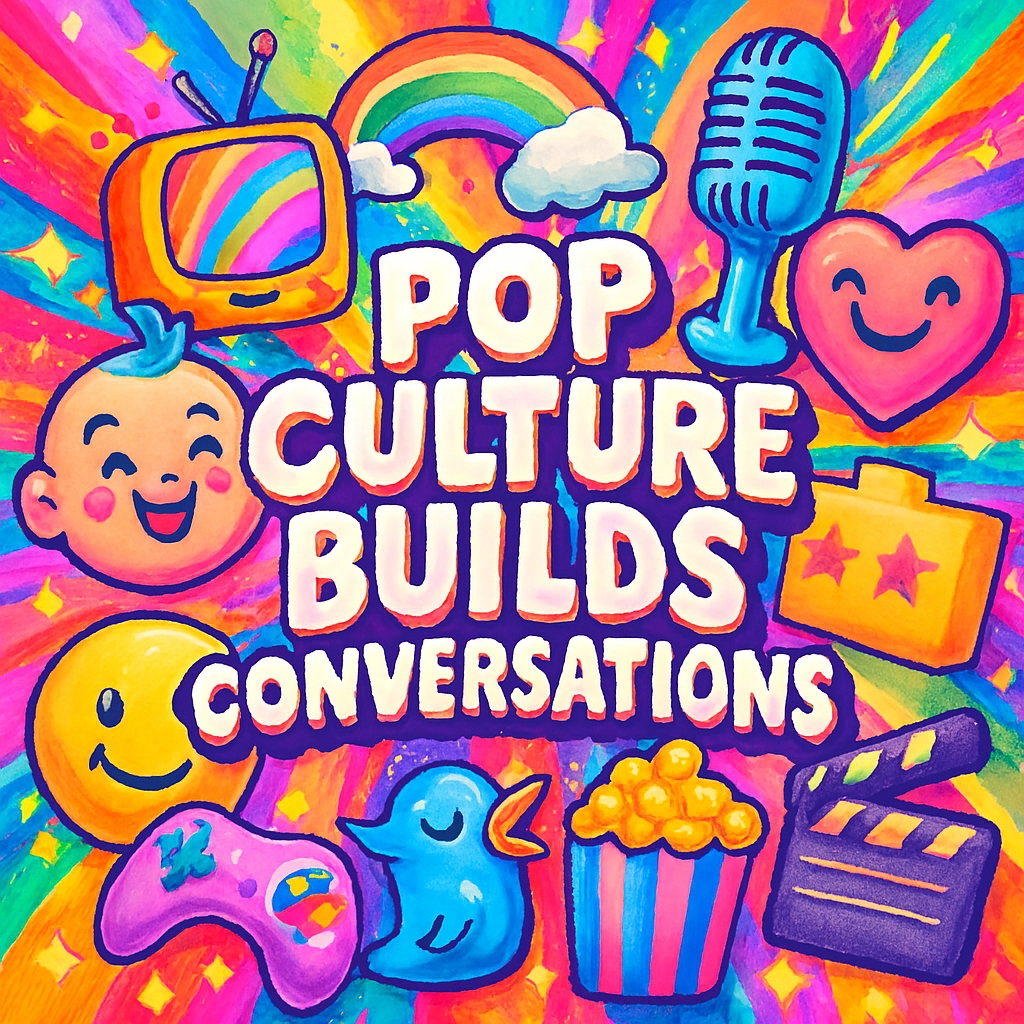
Pop Culture Teaches Symbolic Contrast
Pop culture uses contrast to highlight emotional tension, narrative shifts, and symbolic depth. Juxtaposing light and dark, humor and grief, silence and sound creates emotional complexity. These contrasts guide audience response, shaping how stories are felt and interpreted. Pop culture teaches viewers to recognize symbolic opposites and emotional dualities. A comedic moment in a tragic scene can amplify vulnerability, while a sudden shift from chaos to calm can evoke reflection.
Contrast becomes a tool for emotional pacing and symbolic layering. Pop culture also uses visual contrast—color palettes, costume design, and framing—to signal emotional shifts. These techniques build emotional literacy, helping audiences navigate complexity with nuance. Symbolic contrast is not just aesthetic—it is emotional architecture. It allows stories to breathe, evolve, and surprise. Pop culture turns contrast into conversation, where opposites reveal deeper truths. Emotional contrast teaches resilience, empathy, and symbolic fluency. It transforms storytelling into emotional choreography.
Table – Symbolic Contrast in Pop Culture
| Contrast Type | Example | Emotional Function |
|---|---|---|
| Humor in tragedy | “Jojo Rabbit” | Vulnerability and emotional layering |
| Silence after chaos | “Children of Men” | Reflection and emotional reset |
| Light vs. shadow | “Batman” cinematography | Moral ambiguity and tension |
| Costume contrast | “Clueless” wardrobe | Identity and social dynamics |
| Genre blending | “Shaun of the Dead” | Surprise and emotional fusion |
Pop Culture Reimagines Time Through Narrative Structure
Pop culture reshapes how audiences experience time by manipulating narrative structure. Nonlinear storytelling, flashbacks, montages, and time loops create emotional rhythms that differ from chronological reality. These techniques allow creators to emphasize memory, anticipation, regret, or transformation. Pop culture teaches viewers to interpret time symbolically, where a single moment may carry the weight of years or a rapid sequence may compress emotional growth. Time becomes elastic, shaped by emotional logic rather than calendar precision. Pop culture also uses repetition to reinforce emotional cycles, with recurring motifs signaling unresolved tension or deepening resonance.
Narrative time can be fragmented to reflect trauma, layered to evoke nostalgia, or accelerated to build urgency. These structures influence how people reflect on their own lives, encouraging nonlinear emotional processing. Pop culture rituals like binge-watching or season finales create communal timeframes, synchronizing emotional experience across audiences. Time becomes a shared emotional construct, shaped by pacing, rhythm, and symbolic cues. Pop culture turns chronology into choreography, guiding emotional flow through narrative design.
Table – Narrative Time in Pop Culture
| Technique | Example | Emotional Function |
|---|---|---|
| Flashback | “Lost” (TV series) | Memory and emotional layering |
| Time loop | “Groundhog Day” | Repetition and transformation |
| Montage | “Up” opening sequence | Life compression and grief |
| Nonlinear arcs | “Pulp Fiction” | Surprise and emotional contrast |
| Real-time pacing | “24” (TV series) | Urgency and tension |
Pop Culture Uses Color as Emotional Symbolism
Color in pop culture is more than aesthetic—it is emotional language. Filmmakers, designers, and artists use color palettes to signal mood, identity, and symbolic transformation. Red may evoke passion or danger, while blue suggests calm or melancholy. These associations are reinforced through repetition across genres and formats. Pop culture teaches audiences to read color emotionally, interpreting saturation, contrast, and hue as narrative cues.
Color becomes a tool for emotional pacing, guiding viewers through tension, release, and reflection. It also shapes character identity, with costume design and lighting choices reinforcing symbolic roles. Pop culture rituals like themed outfits, fan art, and visual branding extend color symbolism into everyday life. Emotional resonance is heightened when color shifts signal narrative change or emotional breakthrough. Pop culture turns color into emotional architecture, where every shade carries symbolic weight. It transforms visual design into emotional storytelling, making color a central tool for connection and meaning.
Table – Color Symbolism in Pop Culture
| Color | Common Use Case | Emotional Function |
|---|---|---|
| Red | Romance and action films | Passion and urgency |
| Blue | Drama and sci-fi | Calm and introspection |
| Yellow | Animation and comedy | Joy and spontaneity |
| Black | Noir and fantasy | Mystery and power |
| Pink | Coming-of-age stories | Innocence and emotional softness |
Pop Culture Reinforces Emotional Repetition
Pop culture thrives on repetition, using recurring motifs, phrases, and scenes to build emotional familiarity. Catchphrases, musical refrains, and visual tropes become symbolic anchors that audiences recognize and anticipate. Emotional repetition creates comfort, rhythm, and resonance, allowing viewers to settle into familiar patterns. It also reinforces identity, with repeated symbols signaling belonging and continuity. Pop culture uses repetition to deepen emotional impact, where each recurrence adds nuance or contrast. Rituals like rewatching, quoting, or reenacting extend repetition into daily life.
Emotional repetition becomes a form of symbolic layering, where meaning accumulates through recurrence. Pop culture also critiques repetition, using parody or disruption to challenge expectations. These cycles reflect emotional habits, mirroring how people process memory, grief, joy, and change. Repetition is not redundancy—it is emotional architecture. Pop culture turns recurrence into resonance, building emotional depth through symbolic rhythm.
Table – Emotional Repetition in Pop Culture
| Repetition Type | Example | Emotional Function |
|---|---|---|
| Catchphrase | “I’ll be back” (Terminator) | Identity and anticipation |
| Musical refrain | “Let It Go” (Frozen) | Emotional release and empowerment |
| Visual motif | Red balloon in horror | Suspense and symbolic tension |
| Scene echo | “Lion King” cliff moments | Legacy and emotional continuity |
| Ritual rewatch | Holiday film traditions | Comfort and emotional bonding |
Pop Culture Enables Emotional Forecasting
Pop culture trains audiences to anticipate emotional outcomes based on symbolic cues. A swelling score, a lingering glance, or a sudden silence signals what might come next emotionally. These cues build emotional forecasting, where viewers learn to read narrative patterns and predict emotional shifts. Pop culture teaches emotional literacy by embedding these signals in familiar formats. Forecasting creates tension, excitement, and emotional preparedness.
It also fosters empathy, as viewers anticipate character reactions and emotional consequences. Pop culture rituals like trailer analysis, fan theories, and spoiler avoidance reflect this forecasting instinct. Emotional forecasting becomes part of symbolic fluency, where audiences navigate stories with emotional foresight. It influences how people interpret real-life situations, applying narrative logic to personal experience. Pop culture turns prediction into participation, where emotional anticipation becomes part of the viewing ritual. Forecasting is not just about plot—it is about emotional readiness.
Table – Emotional Forecasting in Pop Culture
| Cue Type | Example | Forecasted Emotion |
|---|---|---|
| Musical buildup | “Inception” score | Tension and climax |
| Lingering shot | “Her” (film) | Longing and emotional shift |
| Silence before reveal | “The Sixth Sense” | Surprise and reflection |
| Symbolic object | Rose in “Titanic” | Memory and emotional closure |
| Character glance | “The Office” reactions | Humor and emotional pacing |
Pop Culture Breaks Boundaries Through Emotional Remix
Pop culture breaks boundaries by remixing emotional formats across genres, cultures, and media. A horror film may include moments of tenderness, while a comedy might explore grief. These emotional blends challenge expectations and expand symbolic range. Remixing allows creators to explore complex emotional landscapes without being confined to genre rules. It also reflects real-life emotional complexity, where joy and sorrow coexist. Pop culture teaches audiences to navigate these blends, building emotional flexibility and symbolic fluency.
Emotional remixing fosters innovation, where new formats emerge from unexpected combinations. It also enables cross-cultural storytelling, blending emotional traditions from different communities. Pop culture rituals like mashups, genre-bending playlists, and hybrid performances reflect this remix instinct. Emotional remixing turns boundaries into bridges, connecting disparate tones, styles, and symbols. Pop culture does not just reflect emotion—it reconfigures it. Remixing becomes a tool for emotional expansion, symbolic play, and narrative evolution.
Table – Emotional Remix in Pop Culture
| Remix Format | Example | Emotional Function |
|---|---|---|
| Horror-comedy | “Get Out” and “Scream” | Tension and humor |
| Musical-drama | “La La Land” | Romance and melancholy |
| Animated tragedy | “Inside Out” | Grief and emotional literacy |
| Sci-fi romance | “Her” | Isolation and intimacy |
| Genre mashup | “Everything Everywhere…” | Chaos and emotional layering |
Conclusion
Pop culture is not a side effect of society—it is one of its most active engines. Across sound, image, ritual, and narrative, it builds emotional infrastructure that helps people connect, reflect, and evolve. It creates shared language, symbolic memory, and emotional choreography that shape how individuals experience themselves and each other. Pop culture breaks boundaries by remixing formats, challenging norms, and amplifying diverse emotional rhythms.
It transforms consumption into participation, repetition into resonance, and storytelling into symbolic architecture. Whether through visual design, sonic pacing, or emotional roleplay, pop culture teaches people how to feel, how to speak, and how to belong. It is not static. It is adaptive, remixable, and emotionally intelligent. In a fragmented world, pop culture offers symbolic continuity. It turns entertainment into emotional literacy and transforms media into meaning. The conversation it builds is not trivial—it is transformative.
Join the Discussion
Which symbolic function of pop culture resonates most with your creative practice? How do you use emotional pacing, visual motifs, or narrative remixing in your own work? What rituals, references, or archetypes shape your editorial voice or storytelling rhythm?
#PopCultureArchitecture #SymbolicStorytelling #EmotionalInfrastructure #NarrativeRemix #VisualLiteracy #CulturalMemory #EditorialDesign #CreativeRituals #EmotionalFluency #MediaAsMeaning
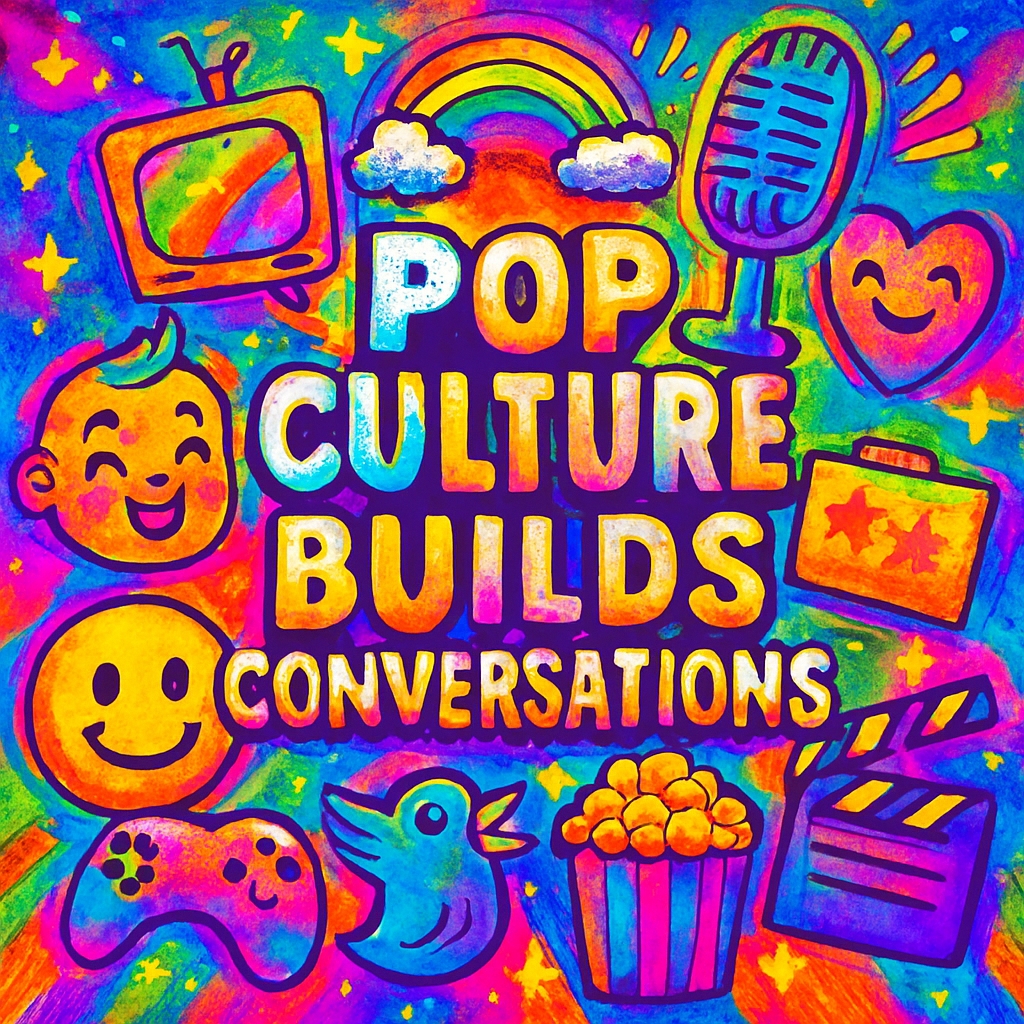
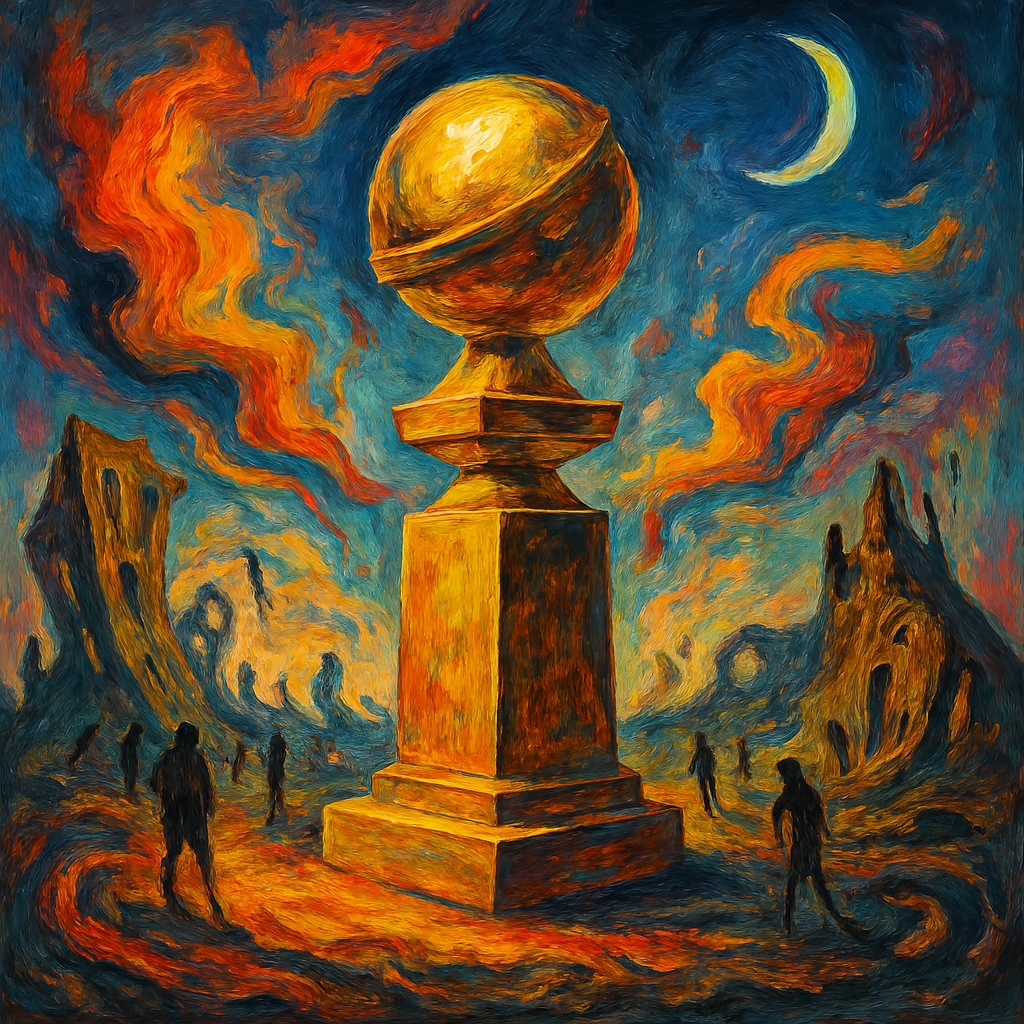
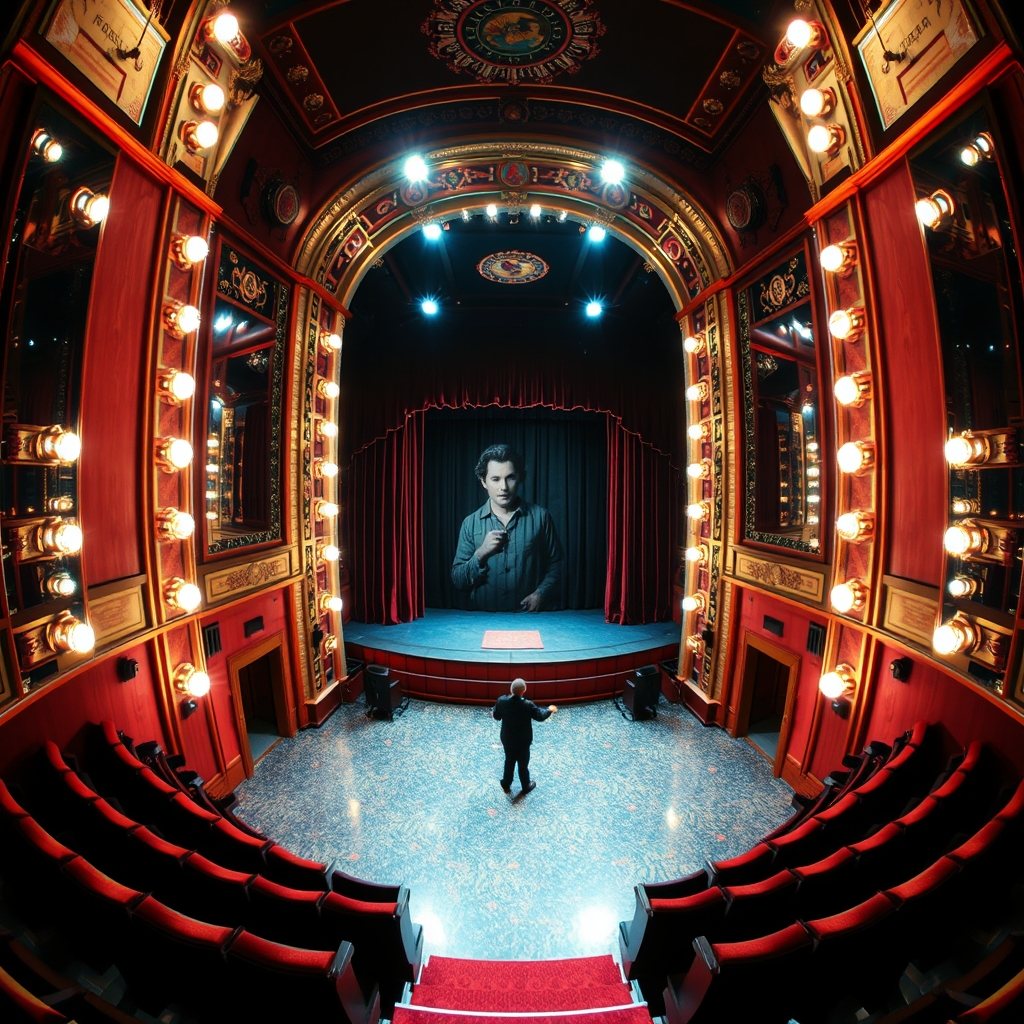
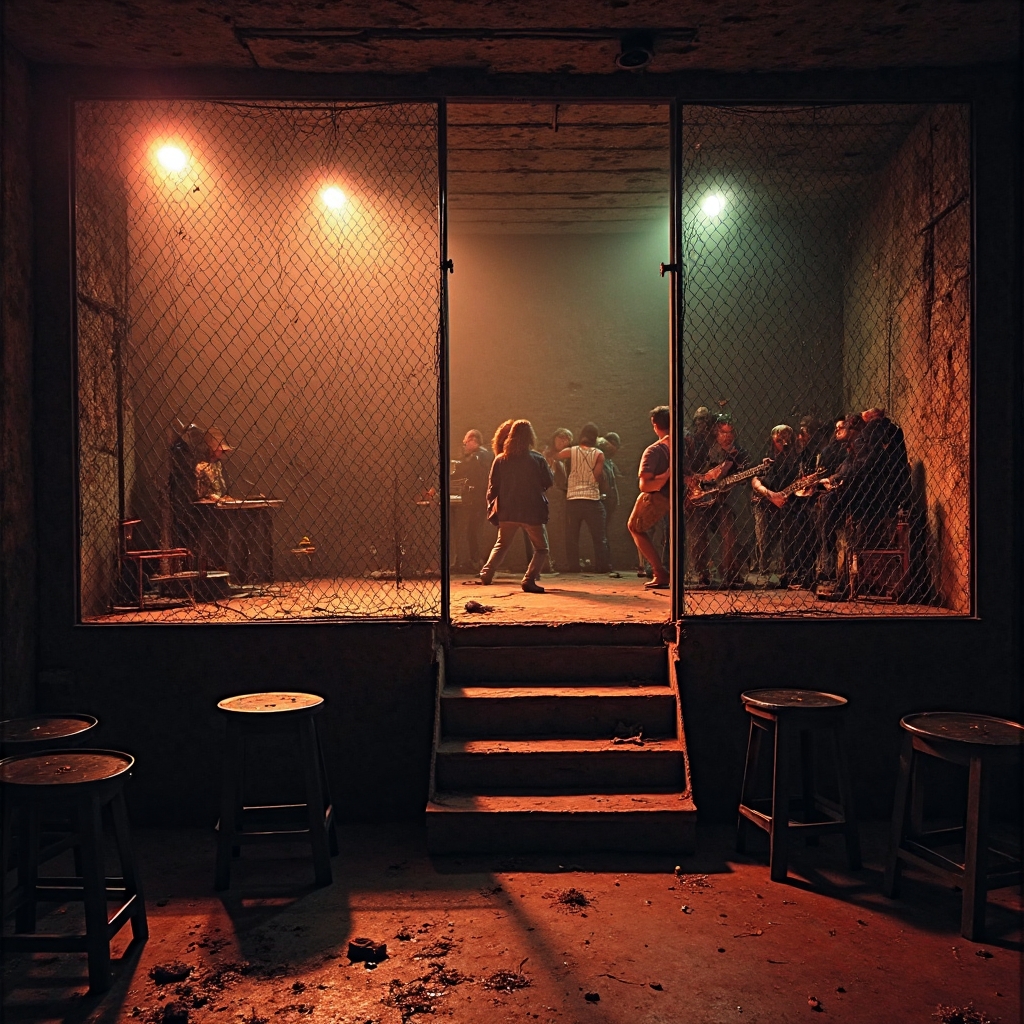
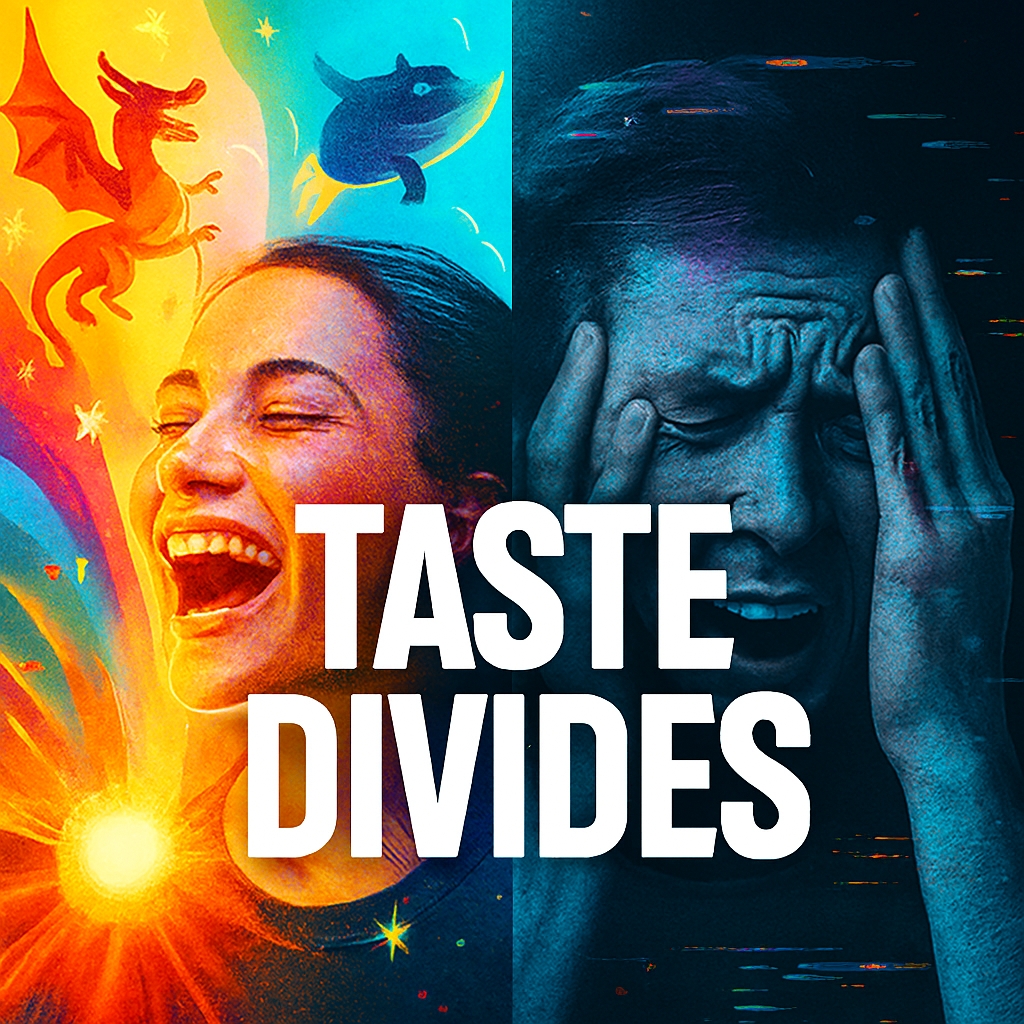
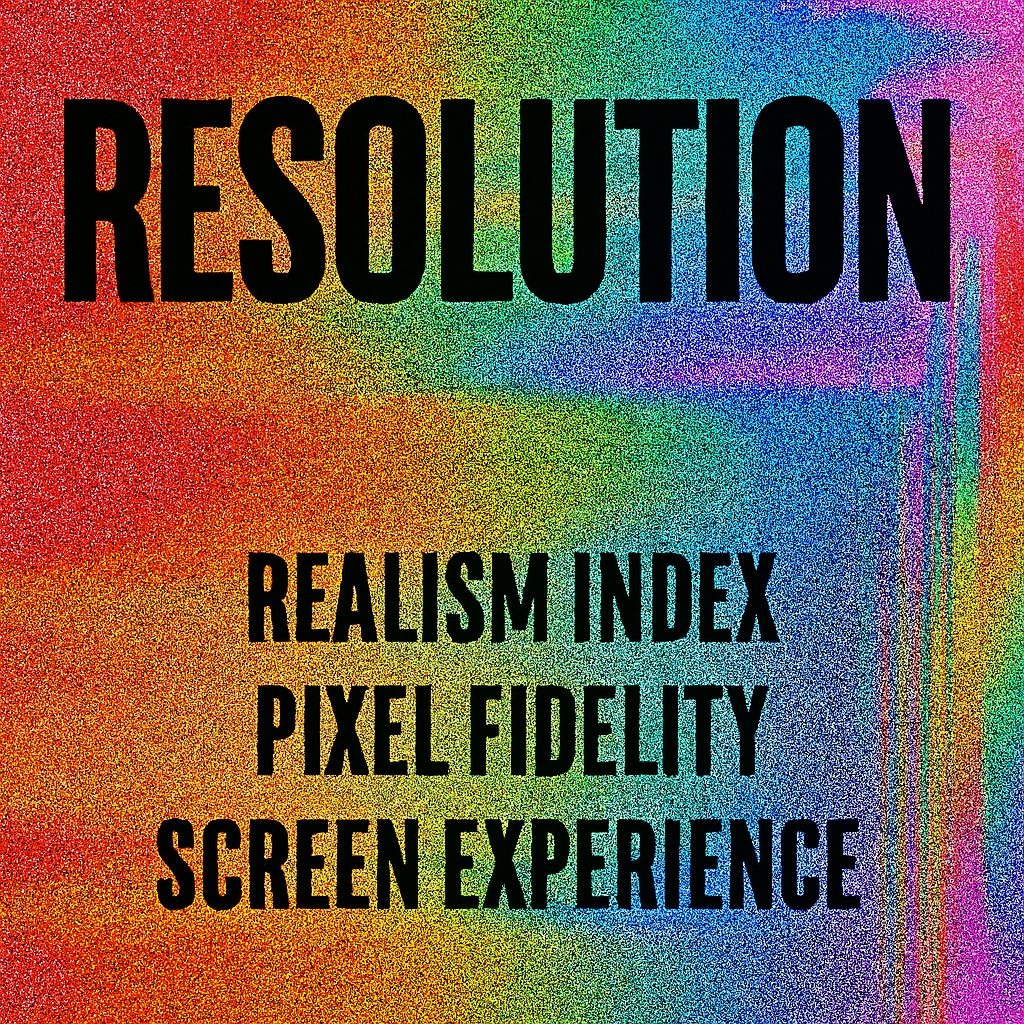
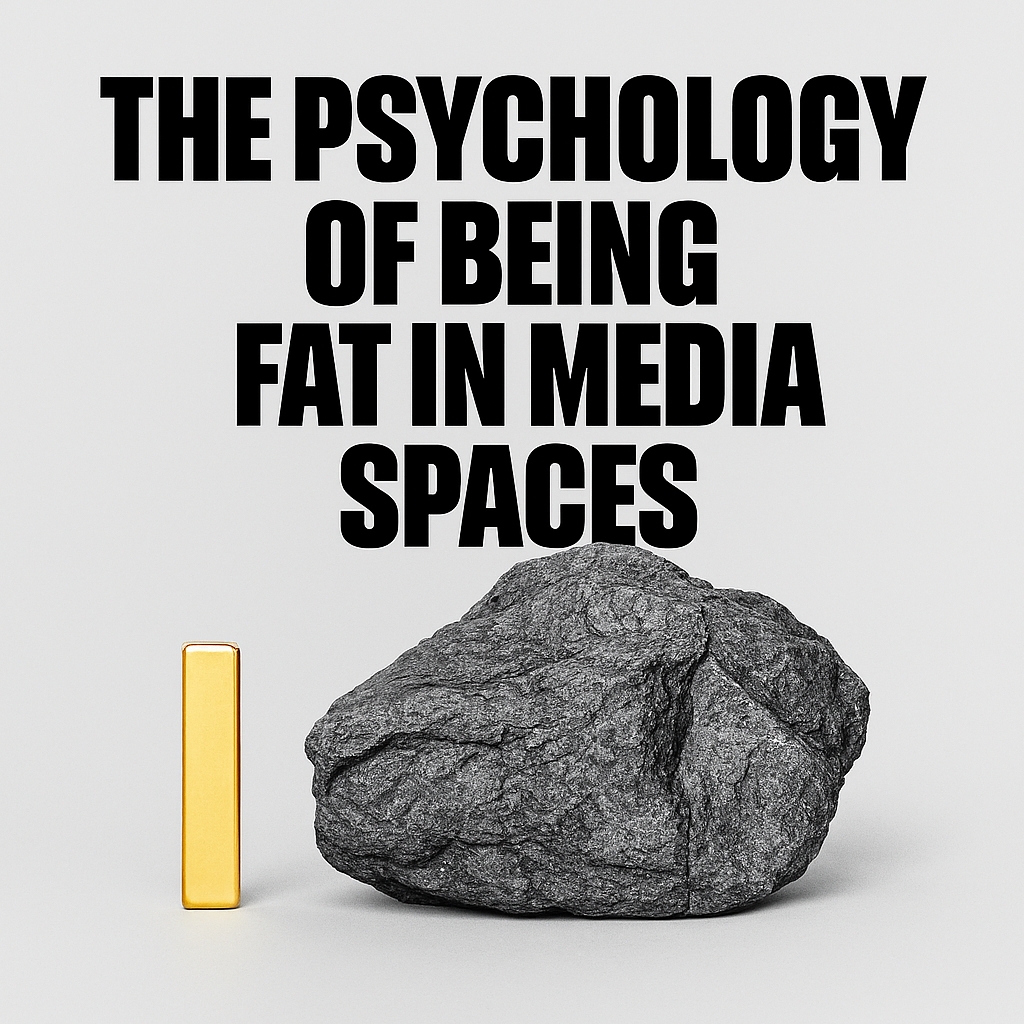
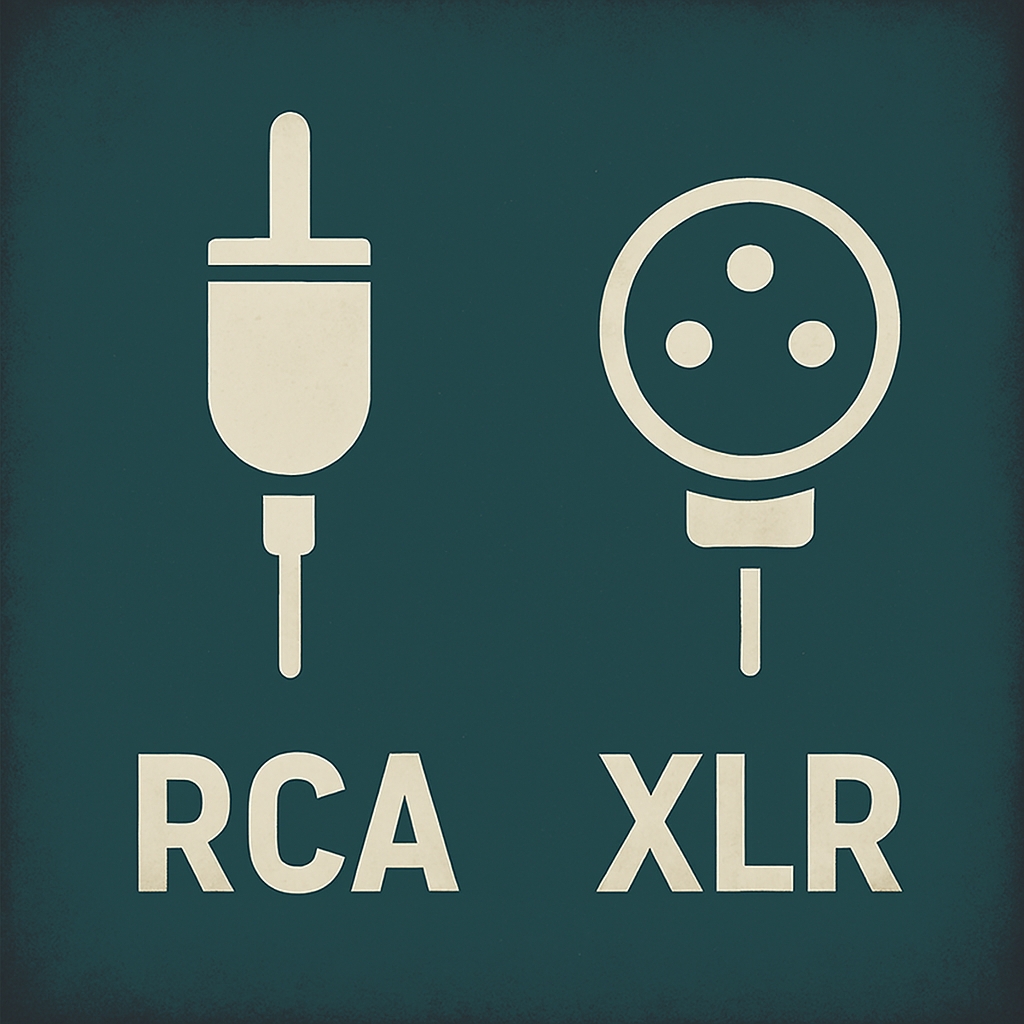


Fred Rogers - A Gentle Yet Powerful Television Host For All
[…] own perfectionism. Rogers did not glorify failure—he humanized it. He taught that mistakes are not identity—they are experience. This message builds emotional courage and learning stamina. Rogers showed that failure is not the […]